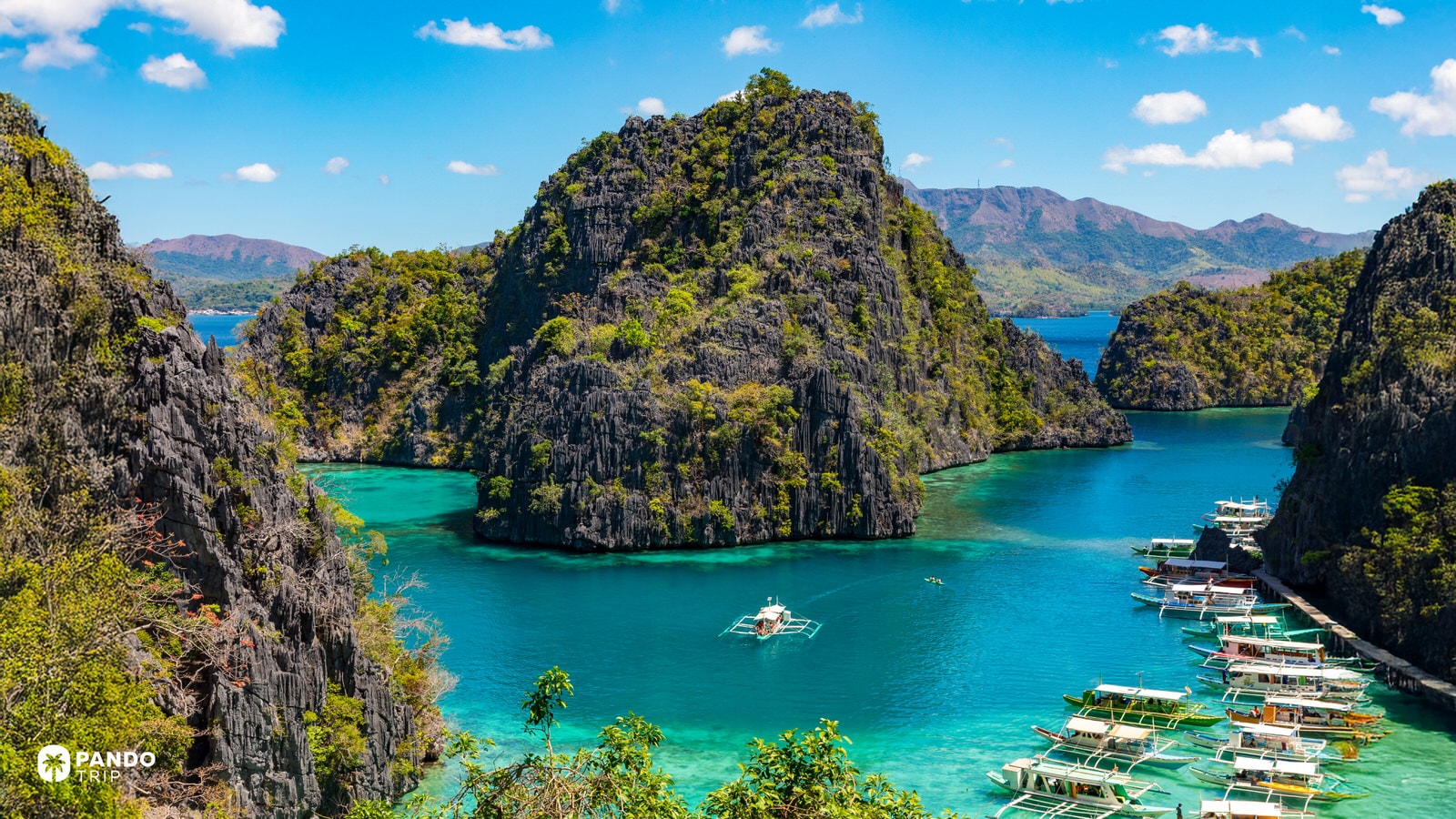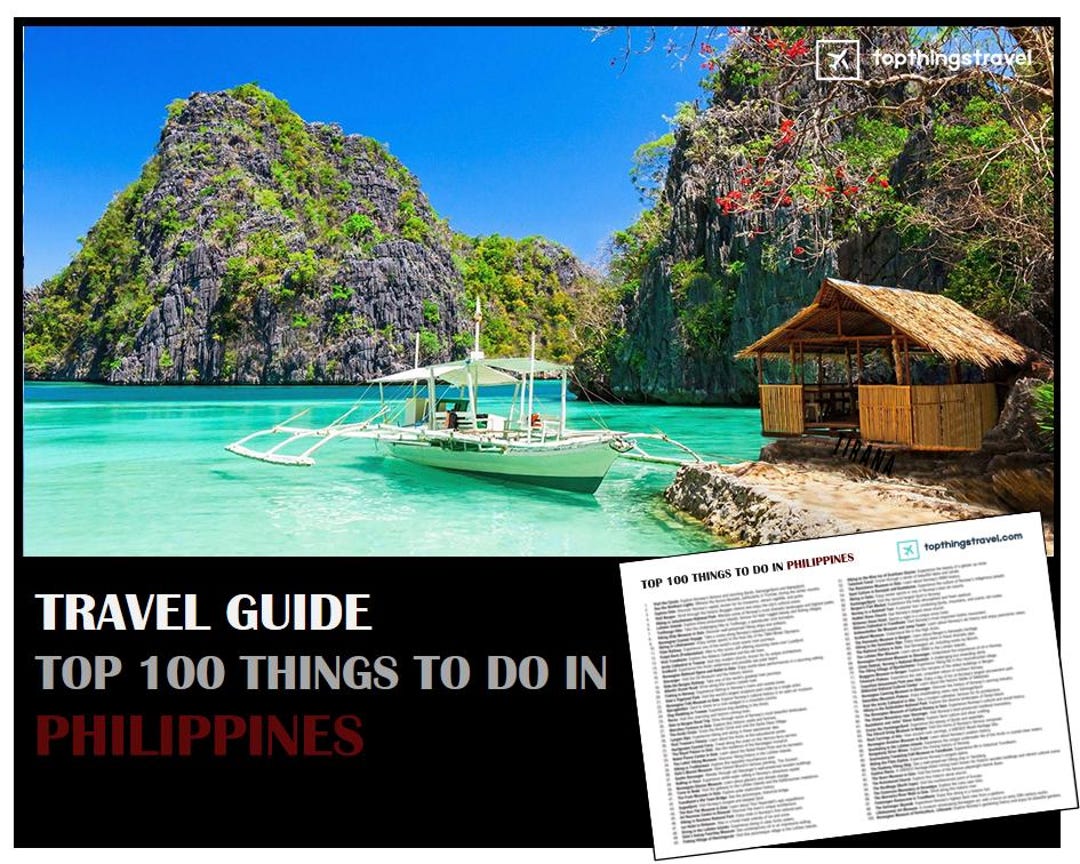
The Philippines, a vibrant archipelago nestled in the heart of Southeast Asia, is a land of captivating contrasts. From its bustling megacities to its serene tropical havens, the Philippines offers an unforgettable experience for every traveler. This comprehensive guide will delve into the best things to do in this breathtaking nation, providing you with a deeper understanding of its history, a glimpse into its captivating attractions, and practical tips to ensure a seamless and enriching journey.
A Tapestry Woven Through Time: A Glimpse into Philippine History
The Philippines boasts a rich and complex history, a narrative woven through centuries of cultural exchange and colonial influence. Understanding this history is crucial to appreciating the country’s present-day identity and the beauty of its diverse heritage.
Related Articles about Unveiling the Pearl of the Orient: A Comprehensive Guide to the Philippines:
- Sweden: A Journey Through the Land of Midnight Sun and Northern Lights
- Vietnam: A Journey Through History, Culture, and Breathtaking Beauty
- Unveiling the Bohemian Jewel: A Comprehensive Guide to the Top Things to Do in the Czech Republic
- Germany: A Journey Through History, Culture, and Fairytale Landscapes
- Norway: A Symphony of Fjords, Northern Lights, and Viking Echoes
- Pre-Colonial Era (Pre-16th Century): Long before the arrival of Europeans, the archipelago was inhabited by various indigenous groups. These communities thrived, developing distinct cultures, social structures, and trade networks. This period is marked by the presence of barangays, self-governing villages, and the flourishing of sophisticated crafts, arts, and maritime traditions.
- Spanish Colonization (1521-1898): Ferdinand Magellan’s arrival in 1521 marked the beginning of Spanish colonization. For over three centuries, the Philippines was under Spanish rule, profoundly influencing its language, religion (primarily Catholicism), architecture, and cuisine. This era left an indelible mark on the country’s landscape, with iconic structures like Intramuros in Manila and numerous Spanish colonial churches scattered across the islands.
- American Period (1898-1946): After the Spanish-American War, the United States gained control of the Philippines. The American period saw the introduction of public education, infrastructure development, and a shift towards English as a primary language. This era also witnessed the rise of Filipino nationalism and the eventual struggle for independence.
- World War II and Independence: The Philippines suffered significant devastation during World War II, with the Japanese occupation leaving a deep scar. The country finally gained independence on July 4, 1946, marking a pivotal moment in its history.
- Post-Independence Era: The Philippines has navigated through various political and economic challenges since gaining independence. The country has embraced democracy, experienced periods of authoritarian rule, and undergone significant social and economic transformations.
Unveiling the Gems: Top Attractions to Explore
The Philippines is a treasure trove of natural wonders and historical landmarks. Here’s a curated list of must-visit attractions:
Natural Wonders:
- Banaue Rice Terraces (Ifugao Province): A UNESCO World Heritage Site, these ancient rice terraces are an awe-inspiring testament to the ingenuity of the Ifugao people. Carved into the mountains over 2,000 years ago, they offer breathtaking views and a glimpse into the rich cultural heritage of the region.
- El Nido and Coron (Palawan): These islands are renowned for their pristine beaches, turquoise waters, dramatic limestone cliffs, and vibrant marine life. El Nido is particularly famous for its hidden lagoons, snorkeling, and diving opportunities. Coron is celebrated for its stunning shipwrecks, perfect for underwater exploration.
- Chocolate Hills (Bohol): These unique geological formations, numbering over 1,700, are a sight to behold. During the dry season, the hills turn a rich chocolate brown, creating a surreal and unforgettable landscape.
- Mayon Volcano (Albay): Known for its perfectly symmetrical cone, Mayon Volcano is an active volcano that dominates the landscape of Albay province. The volcano’s beauty is matched by its power, making it a truly mesmerizing sight.
- Hundred Islands National Park (Pangasinan): This unique park features a collection of over 100 small islands, each with its own character and charm. Visitors can enjoy island hopping, swimming, snorkeling, and exploring the caves and lagoons.
- Puerto Princesa Subterranean River National Park (Palawan): Another UNESCO World Heritage Site, this underground river flows through a stunning cave system. Boat tours allow visitors to explore the intricate rock formations and observe the diverse wildlife that calls the cave home.
Historical and Cultural Landmarks:
- Intramuros (Manila): The "Walled City" of Manila, Intramuros, is a UNESCO World Heritage Site and a living museum. Explore its Spanish colonial architecture, including Fort Santiago, San Agustin Church, and the cobblestone streets that transport you back in time.
- Vigan City (Ilocos Sur): Another UNESCO World Heritage Site, Vigan City is a well-preserved Spanish colonial town. Its cobblestone streets, ancestral houses, and traditional crafts offer a captivating glimpse into the past.
- San Agustin Church (Manila): Located within Intramuros, this stunning baroque church is a UNESCO World Heritage Site and a testament to Spanish colonial architecture. Its interior is adorned with intricate details and historical artifacts.
- Quiapo Church (Manila): A significant religious site, Quiapo Church is home to the Black Nazarene, a revered religious icon. It’s a bustling hub of faith and devotion, reflecting the deep religious roots of the Filipino people.
- National Museum Complex (Manila): This complex comprises several museums, including the National Museum of Fine Arts, the National Museum of Anthropology, and the National Museum of Natural History. It offers a comprehensive overview of Philippine art, culture, and natural history.
Practical Travel Tips for a Smooth Journey
Before embarking on your Philippine adventure, consider these essential travel tips:
- Visa Requirements: Check the visa requirements based on your nationality. Many nationalities can enter the Philippines visa-free for a specific period.
- Currency: The official currency is the Philippine Peso (PHP). ATMs are widely available in cities and tourist areas. Credit cards are accepted in most establishments, but it’s always advisable to carry some cash.
- Language: Filipino and English are the official languages. English is widely spoken, making communication relatively easy for international travelers.
- Transportation:
- Flights: Domestic flights are a convenient way to travel between islands.
- Buses: Buses are a common mode of transportation for long-distance travel on the main islands.
- Jeepneys: These colorful, iconic vehicles are a unique and affordable way to get around in cities.
- Taxis and Ride-Sharing Apps: Taxis and ride-sharing apps like Grab are readily available in urban areas.
- Ferries: Ferries connect many islands, offering a scenic and cost-effective travel option.
- Safety: The Philippines is generally safe for tourists, but it’s essential to be aware of your surroundings, especially in crowded areas. Be cautious of pickpockets and petty theft. It is also wise to check for any travel advisories from your home country before your visit.
- Health: Consult your doctor regarding necessary vaccinations and health precautions. It is advisable to drink bottled water and be mindful of food hygiene, especially from street vendors.
- Respect Local Customs: Filipinos are known for their hospitality and warmth. Dress respectfully, especially when visiting religious sites. Learn a few basic Filipino phrases to show appreciation.
- Bargaining: Bargaining is common in markets and with local vendors, but be respectful and avoid excessive haggling.
- Connectivity: Mobile internet is readily available in most areas. You can purchase a local SIM card for convenient access.
- Packing: Pack light, comfortable clothing, swimwear, sunscreen, insect repellent, and any necessary medications.
Planning Your Visit: The Best Time to Go
The best time to visit the Philippines is during the dry season, from November to May. This period offers the most favorable weather conditions, with less rainfall and lower humidity.
- November to February: This is the peak season, offering pleasant temperatures and clear skies. It’s ideal for exploring the islands and enjoying outdoor activities.
- March to May: The weather can get hot and humid, but it’s still a good time to visit, especially for those who enjoy the heat and want to avoid the crowds of the peak season.
- June to October: This is the rainy season, with a higher chance of typhoons and heavy rainfall. While some areas are still accessible, travel can be more challenging.
Accommodation Options: Where to Rest Your Head
The Philippines offers a wide range of accommodation options to suit every budget and preference:
- Luxury Resorts: Found in popular tourist destinations like Boracay, Palawan, and Cebu, these resorts offer world-class amenities, stunning views, and exceptional service.
- Mid-Range Hotels: These hotels provide comfortable rooms, convenient locations, and a good balance of value and quality. They are available in most major cities and tourist areas.
- Budget-Friendly Guesthouses and Hostels: Ideal for backpackers and budget travelers, these options offer affordable accommodation and a social atmosphere.
- Villas and Vacation Rentals: Available in many locations, these options provide privacy, space, and a home-away-from-home experience.
Indulging in Flavors: A Taste of Philippine Cuisine
Philippine cuisine is a delightful blend of influences, creating a unique and flavorful culinary experience. Here are some must-try dishes:
- Adobo: The national dish, adobo, is a flavorful stew made with meat (usually chicken or pork) braised in vinegar, soy sauce, garlic, peppercorns, and bay leaves.
- Sinigang: A sour and savory soup made with tamarind, vegetables, and meat or seafood.
- Lechon: Roasted pig with crispy skin and tender meat.
- Sisig: A sizzling dish made with chopped pig’s face and ears, onions, and chili peppers.
- Pancit: A noodle dish, with many regional variations.
- Halo-Halo: A popular dessert made with shaved ice, sweet beans, fruits, leche flan, and other toppings.
- Kinilaw: A ceviche-like dish made with raw fish marinated in vinegar, onions, ginger, and chili peppers.
Transportation Options: Navigating the Archipelago
Getting around the Philippines can be an adventure in itself. Here’s an overview of your transportation options:
- Domestic Flights: The most efficient way to travel between islands. Several airlines offer frequent flights to major destinations.
- Buses: A cost-effective way to travel long distances on the main islands. Buses range from basic to air-conditioned and are generally safe.
- Jeepneys: These iconic, colorful vehicles are a unique and affordable mode of transport within cities. They follow specific routes and are a great way to experience local life.
- Taxis and Ride-Sharing Apps (Grab): Readily available in major cities. Metered taxis are common, but ensure the meter is running. Grab is a convenient and reliable ride-sharing service.
- Ferries and Boats: Ferries and boats are essential for island hopping and traveling between smaller islands. They range from basic to comfortable, and travel times can vary.
- Tricycles: These motorized tricycles are a common mode of transport in smaller towns and cities. They are ideal for short distances.
- Car Rentals: Available in major cities and airports, car rentals offer flexibility for exploring at your own pace. However, driving conditions can be challenging in some areas.
Conclusion: Embracing the Philippine Experience
The Philippines is a destination that captivates with its natural beauty, rich history, and warm hospitality. From exploring ancient rice terraces to diving in pristine coral reefs, and savoring the delicious flavors of Filipino cuisine, the Philippines offers an unforgettable experience for every traveler. By following this comprehensive guide and embracing the spirit of adventure, you’re sure to create lasting memories in this enchanting archipelago. So, pack your bags, prepare your senses, and get ready to be mesmerized by the Pearl of the Orient.








